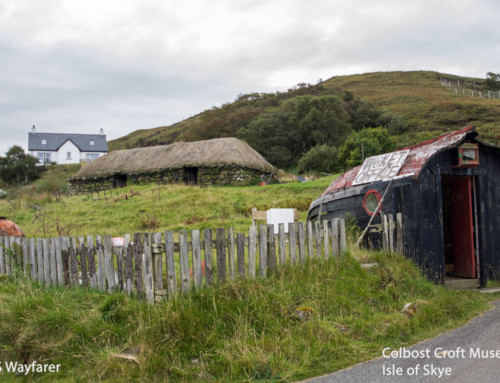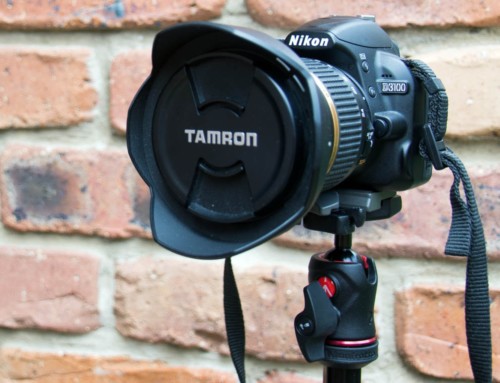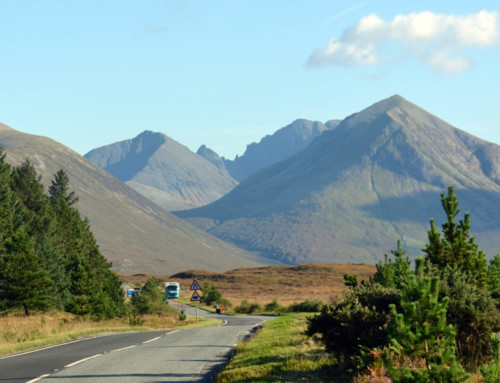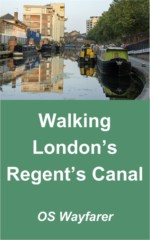I recently purchased a “Tamron SP AF 10mm-24mm F/3.5-4.5 Di II LD Aspherical
I am a beginner at photography and a couple of years ago attended a weekend course for beginners. As a result I purchased a Nikon D3100 and a Tamron 18-270mm f3.5-6.3 Di II VC PZD. However on the trip mentioned above I found the zoom lens very restrictive when taking external and internal photos of the buildings.
We are planning a trip to the UK in the second half of this year and in particular two weeks on a narrow boat and a week on the Isle of Skye. Therefore I am anxious to find out all about this new lens so I can capture, what I expect to be amazing landscapes and wildlife on Skye and everyday life on the canals. My initial research to date, which is documented below, indicates that the wide angle lens allows far more creativity than simply capturing a wider view of an image.
What is a wide angle lens?
A wide angle lens on a full-framed sensor is something less than 35mm, usually 24mm -35mm. An ultra wide angle lens on a full-framed sensor is something less than 24mm. On an APS-C sized sensor these numbers would be: wide angle 36mm – 52mm; and ultra wide angle something less than 36mm.
On my Nikon D3100 APS-C sensor using the Tamron’s 10mm-24mm range the measurements are actually: 15mm-36mm. Therefore the lens will vary from ultra wide to wide. The shorter the focal length – the wider the angle of view.
What can a wide angle lens do?
- Offer a wider field of view – captures more of an image
- Enable you to get very close to a subject/object
- Exaggerate depth and relative size
- Distort the periphery of an image
- Facilitate creativity
How should a wide angle lens be used
It would seem that wide angle lenses are difficult to use effectively. My research has identified the following tips for using a wide angle lens:
- When photographing landscapes it is best to identify something of interest that can be placed in the foreground. Then it is essential to get as close and as low as possible to this item/object/area of interest. This is because the wide angle lens can still show plenty of background. This item/object/area of interest, when placed in the lower third of the photo, will provide an anchor for the image. Foreground items will appear disproportionately bigger. This approach facilitates creativity. By providing an interesting foreground the chances of capturing an image with a dull foreground and sky will be lessened.
- Be careful when taking photographs of people. If you get too close personal features can become exaggerated and distorted. Objects and people at the extremities of an image can also appear wider than in real life
- Always shoot level with the horizon to prevent distortion of the image. Shooting above or below the horizon can cause vertical lines to converge.
- A wide angle lens can capture unintended items/objects/people and so always check to make sure these extras are avoided if possible.
This is only a beginners interpretation of using a wide angle lens and I hope to gain a better understanding as I use my new lens. This post was drawn from the references below and these provide far more detail on the subject of using wide angle lenses.
I’ll be trialling these techniques in the future to try and improve my photographs.
References
- http://digital-photography-school.com/how-to-get-the-best-results-from-ultra-wide-lenses – Kim Brebach
- http://www.cambridgeincolour.com/tutorials/wide-angle-lenses.htm
- http://digital-photography-school.com/6-winning-ways-to-work-wide – Joe Decker
- http://www.digital-photo-secrets.com/tip/3892/5-uses-for-a-wide-angle-lens/ – David Peterson
- http://viewsinfinitum.com/2010/05/21/10-tips-on-using-a-wide-angle-lens/ – Justin Miller
- http://www.naturephotographers.net/articles0403/dw0403-1.html – Darwin Wiggett
============================================
============================================
Going on holidays soon? Looking for information? Consider our eBooks on Barcelona, Istanbul, Bucharest, Budapest and The Isle of Skye – these books describe our experiences and provide resources.
Views: 847







Leave A Comment